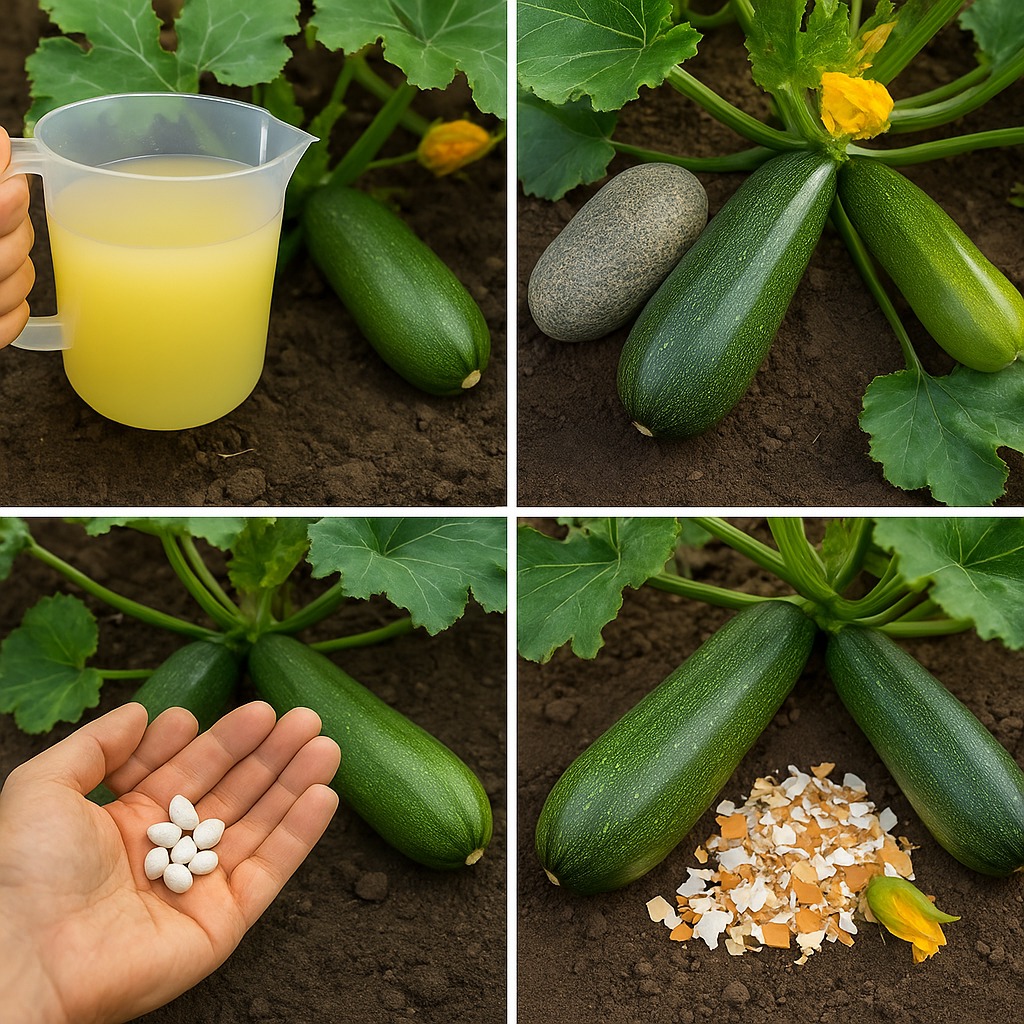
Zucchini is one of the easiest and most rewarding crops for home gardeners. It grows fast, yields a lot, and doesn’t require constant care. But if you want to go beyond “just enough” and harvest a truly impressive crop, a little extra nutrition goes a long way. Luckily, you don’t need to spend money on expensive synthetic fertilizers. In fact, you probably already have everything you need at home to feed your zucchinis the natural way.
Here are four tried-and-true feeding methods that will supercharge your zucchini plants—and they’re all organic, budget-friendly, and beginner-approved.
🐄 1. Manure Magic: The Time-Tested Growth Booster
Manure is one of the oldest and most trusted natural fertilizers—and it works wonders on zucchini. Packed with nitrogen, phosphorus, and potassium, well-composted manure enriches the soil, promotes lush leaf growth, and supports strong flowering.
Best manure types: Cow, horse, pig, goat, or poultry (chicken, duck, goose) manure.
When and how to apply:
- Before planting: Apply well-rotted manure in late fall or early spring. Mix it into the top 15–20 cm of soil.
- During flowering: Mix fresh manure with water in a 1:10 ratio. Let it sit for 2–3 days, then water around the plant base. This boosts energy during flowering and fruit set.
Tip: Never apply fresh manure directly to the roots or leaves—it can burn them. Always dilute and water the soil only.
Why it works: Manure feeds soil microbes, improves texture, and adds organic matter, all of which lead to stronger, more productive zucchini plants.
🧪 2. Iodine Solution: A Micronutrient Kick for Healthier Plants
You might think iodine belongs only in the medicine cabinet, but a small amount in the garden can go a long way. Iodine supports plant immunity, encourages robust flowering, and helps prevent fungal diseases like powdery mildew—common in zucchini crops.
Recipe:
- 40 drops of iodine
- 10 liters of clean water
Mix well and apply to zucchini plants 2–3 weeks after planting. Repeat during flowering and early fruiting for best results.
How to use it:
- Water around the plant base or spray lightly on the leaves.
- Use once every 2–3 weeks during active growth.
Why it works: Iodine stimulates healthy leaf development and helps zucchinis resist stress and disease. Just don’t overdo it—iodine is a micronutrient, so a little goes a long way.
🔥 3. Wood Ash: The Potassium Powerhouse
Zucchinis need potassium to produce big, healthy fruits. And one of the best sources? Good old wood ash from your fireplace or grill (as long as no chemicals or treated wood were used).
Wood ash contains:
- Potassium (up to 30%)
- Calcium
- Magnesium
- Trace elements that improve root strength and fruit size
How to apply:
Wet method:
- Mix 30 grams of sifted ash into 10 liters of water.
- Water at the base of each plant during the fruiting stage (when small zucchinis are starting to form).
Dry method:
- Sprinkle a small amount of dry ash (a few tablespoons) around each plant.
- Do this on a moist day or after watering so nutrients can soak into the soil.
Why it works: Potassium is essential for flower formation and fruit development. Without enough of it, your zucchinis may produce lots of leaves—but very few fruits.
🍞 4. Yeast Solution: The Natural Growth Accelerator
Yeast isn’t just for baking—it’s also a secret weapon in the garden. Active yeast feeds beneficial microbes in the soil and boosts root growth and mineral absorption. Think of it as a probiotic for your plants.
Recipe:
- 35 grams of fresh baker’s yeast (or 1 packet of dry yeast)
- 1 cup of sugar
- 3 liters of warm water
Let the mix ferment in the sun for 4–5 hours. Then dilute the mixture in 10 liters of water and use it to generously water zucchini plants at the base.
Best time to use it: Once the plant has 4–5 true leaves or when it starts flowering.
Why it works: The sugars in the solution feed soil bacteria, while the yeast stimulates the production of growth hormones. This translates into stronger stems, more flowers, and better fruit set.
🌿 Why These Natural Methods Work (And Why You Should Try Them)
Each of these four feeding techniques addresses a different need in your zucchini plant’s life cycle:
| Fertilizer | What It Does |
|---|---|
| Manure | Provides nitrogen and overall nutrient balance for leafy growth |
| Iodine | Boosts flowering and protects against disease |
| Wood Ash | Supplies potassium and calcium for fruit development |
| Yeast | Enhances root strength and nutrient uptake |
They’re not just effective—they’re also safe for your health and for the environment. You’re not adding synthetic chemicals to your food, and you’re recycling what you already have around the house or farm.
✅ Bonus Tips for Bigger Yields
Feeding your plants is crucial—but so is good gardening technique. To maximize your harvest:
- Water deeply at the base (not the leaves) to prevent fungal diseases.
- Harvest regularly—the more you pick, the more the plant produces.
- Mulch the soil to retain moisture and reduce weeds.
- Plant in full sun—zucchinis love at least 6–8 hours of sunlight per day.
- Rotate crops yearly to avoid soil exhaustion and disease buildup.
🌱 Final Thoughts
Zucchinis may be low-maintenance, but a little extra love can take your harvest from decent to downright impressive. By using natural fertilizers like manure, iodine solution, wood ash, and yeast, you give your plants everything they need—without the downsides of synthetic chemicals.
These methods are safe, cheap, and sustainable. Plus, your zucchini will thank you by growing faster, larger, and more delicious than ever before.
Next time you walk into your garden, get ready to see not just one or two fruits—but baskets full of them. Happy growing!



